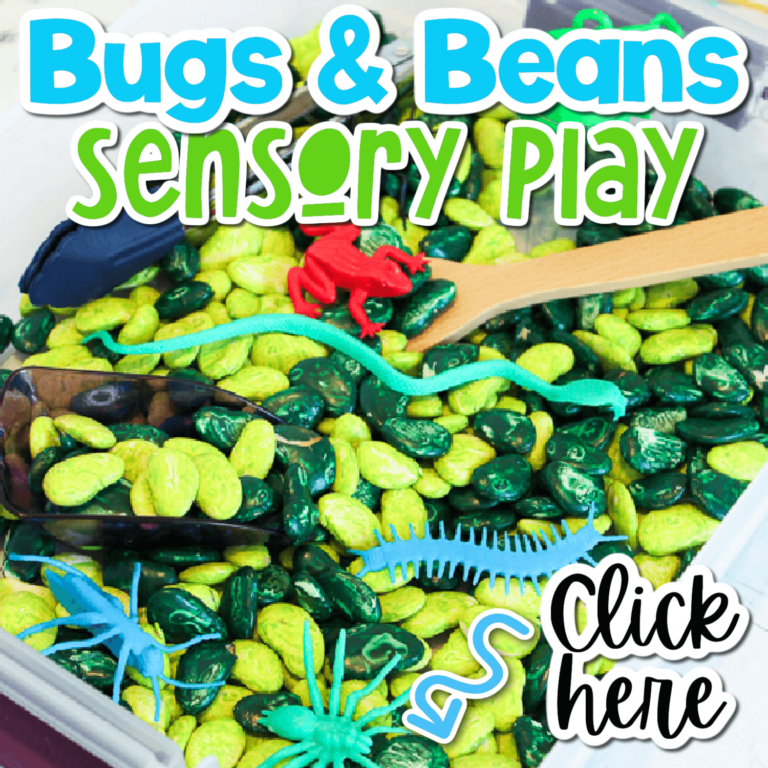25+ Best Arctic Animal Books for Kids
If you’re planning a winter theme in your classroom or homeschool, incorporating Arctic animals is such a fun and engaging way to bring science and literacy together! Preschoolers are naturally curious about animals, and there’s something truly magical about the creatures that live in the snowy, icy Arctic. Whether you’re reading during circle time, snuggling up for a winter storytime, or building out a thematic unit with sensory bins and dramatic play—these Arctic animal books are the perfect addition to your plans.

Recommended Grade Level:
An Arctic animal theme gives kids a chance to learn about animal habitats, seasonal changes, and how animals adapt to survive in extreme cold. You can build vocabulary words like “camouflage” and “migration,” and explore geography and weather while practicing early literacy skills—all through play and picture books!
And trust me—once kids get a peek at a narwhal’s tusk or a polar bear diving into icy water, they’ll be hooked! The best part is that these books are perfect for combining with hands-on activities like matching games, sensory bins, and movement activities to keep the learning playful and developmentally appropriate.
Arctic Animals vs. Polar Animals: What’s the Difference?
Before we jump into the book list, it’s important to clear up a super common mix-up: Arctic vs. polar animals. These terms often get used interchangeably, but they actually refer to two different things!
Polar animals include creatures from both the Arctic (North Pole) and Antarctica (South Pole). While both areas are icy and cold, the animals that live there are very different!
Arctic animals live in the Northern Hemisphere and include:
- Polar bears
- Arctic foxes
- Narwhals
- Beluga whales
- Walruses
- Reindeer (caribou)
- Snowy owls
Antarctic animals live in the Southern Hemisphere and include:
- Penguins (like the Emperor penguin)
- Leopard seals
- Krill
Since this book list is focused on Arctic animals only, we’ll be leaving out the penguins and diving into the animals who live in the frozen tundra, icy waters, and snowy forests of the Arctic.
Whether you’re building a sensory bin, planning dramatic play, or creating a cozy winter book nook, these titles are the perfect companion to your Arctic theme!
Learning About Animals That Live in The Arctic in Preschool
ARCTIC ANIMALS ACTIVITIES AND BOOKS
BOOKS ARE EXCELLENT STARTING POINTS FOR LEARNING ON ANY TOPIC. THEY DRAW KIDS’ INTEREST, PULL THEM IN WITH BEAUTIFUL ILLUSTRATIONS, AND GIVE THEM INTERESTING INFORMATION.
Arctic animals books for preschool cover a wide variety of animals. Your students can learn about beluga whales, the arctic ground squirrel, the snowy owl, snowshoe hare, polar bears or musk oxen!
Whether you are doing an Arctic Animal unit or planning to add animals into a different unit, these books are fun & factual. Books are an excellent way to explore the unknown or different and arctic animals are no different.
In addition to learning animals facts and behaviors, you can extend learning to arctic habitats. Kids can learn about arctic waters in books about the Arctic Ocean, or the arctic tundra that extends across North America.
One way I love to extend learning in preschool is with a sensory bin. Create an arctic-theme bin with plastic arctic terns, musk ox, polar bears, or wolves for children to explore and play.
Sensory bin play expands kids’ knowledge and allows them creativity and freedom to use language and vocabulary they just learned in the book.
In addition to learning about specific arctic animals, you can pose additional questions to young learners. Depending on the ages of the children, there could be additional questions for thought:
- Which arctic animal from the book do you find the most interesting? Why?
- How do you think the animals in the Arctic stay warm in such a cold environment?
- What special abilities or adaptations do these animals have that help them survive in the Arctic?
- Can you name some similarities and differences between the Arctic animals we read about in this book?
What Can Preschoolers Learn While Listening to Books About Arctic Animals?
ARCTIC LAND MAMMALS
LEARNING ABOUT ARCTIC ANIMALS THROUGH BOOKS IS A GREAT TIME TO INTRODUCE SCIENTIFIC VOCABULARY THAT SOMETIMES TRANSFERS TO OTHER TOPICS.
You can use the books to introduce important vocabulary and concepts:
- Characteristics
- Adaptations
- Habitat
- Survival
- Migration
Arctic Animal Books For Kids
We love using books as a way to reinforce what we are learning. These books are a balanced cross between fun and facts. Each book is filled with a way for kids to explore the arctic world through the lives of these animals. If you’re doing an Arctic Animal unit or if you’re using arctic animals as part of a different unit, these books are sure to please!
Fiction & Story-Based Books About Arctic Animals
1. Little Polar Bear by Hans de Beer
Lars, a curious young polar bear, gets swept away on an ice floe and ends up far from home. Along his journey, he meets new animals and adventures through unfamiliar lands, determined to return to the Arctic. A gentle, heartwarming story of courage and friendship.

2. I’m a Narwhal by Mallory Loehr
This cheerful Little Golden Book introduces young readers to the fascinating narwhal—known as the “unicorn of the sea.” Through simple rhymes and colorful illustrations, kids will learn fun facts about where narwhals live, what they eat, and how they use their long tusks. It’s a great blend of playful storytelling and real science, perfect for preschoolers who are curious about ocean animals and love anything magical. A sweet pick for read-alouds or to pair with your Arctic animal unit!

3. Arctic Fox by Katie Marsico
Told in a preschool-friendly narrative, this nonfiction-style book explores how the Arctic fox changes colors, hunts for food, and survives the frigid weather. Beautiful real-life images pair with simple text that’s perfect for introducing animal adaptations.

4. Narwhal: Unicorn of the Sea! by Ben Clanton
This silly early graphic novel stars a cheerful narwhal and his jellyfish best friend. While it’s more about fun than facts, it gets kids excited about narwhals and the Arctic Ocean. Great for older preschoolers or group reading.

5. Rory: An Orca’s Quest for the Northern Lights by Sarah Cullen
This silly early graphic novel stars a cheerful narwhal and his jellyfish best friend. While it’s more about fun than facts, it gets kids excited about narwhals and the Arctic Ocean. Great for older preschoolers or group reading.

6. The Snow Bear by Miriam Moss
Lily finds a lost polar bear cub and bravely sets out across the frozen tundra to help him find his mother. Along the way, she meets other Arctic animals who lend a hand. A gentle, snowy adventure about kindness and teamwork.

7. Baby Beluga by Raffi
Based on the beloved song, this board book follows a baby beluga through its peaceful Arctic day. Preschoolers love singing along and pointing out familiar animals in the ocean. A perfect addition to any read-aloud basket!

8. Arctic White by Danna Smith
A young girl explores her snow-covered world, waiting for the magical colors of the Northern Lights to appear. Though not focused on animals, the setting is beautifully Arctic and pairs well with any animal unit. The poetic text and dreamy illustrations make it a lovely bedtime read.

9. The Way Home for Wolf by Rachel Bright
Wilf, a determined but too-proud wolf pup, gets separated from his pack. Along the journey home, he learns to accept help from other Arctic animals. With lyrical language and gorgeous art, this book is packed with themes of bravery, friendship, and resilience.

Preschool-Friendly Nonfiction Books
10. Who Lives Here by Deborah Hodge
This beautifully photographed nonfiction book introduces young learners to the animals that call the Arctic home. With simple language and engaging facts, preschoolers will discover how polar bears, Arctic foxes, snowy owls, and other animals survive in cold, snowy environments. Each page explores a different animal’s unique adaptations, making it perfect for early science discussions. It’s an excellent read-aloud or quiet-time book to deepen your Arctic theme with real-world connections.

11. Polar Bears by Gail Gibbons
This nonfiction favorite by Gail Gibbons introduces preschoolers to the world of polar bears with clear, simple explanations and colorful illustrations. Kids will learn where polar bears live, what they eat, how they care for their cubs, and how they survive the cold Arctic climate. The text is packed with facts but remains accessible for young learners, making it a great resource for early science exploration. A wonderful pick for your Arctic animal theme or winter nonfiction collection!

11. National Geographic Readers: Polar Bears by Laura Marsh
Filled with vivid photos and fun facts, this early reader teaches preschoolers how polar bears live and survive in the cold. With simple sentences and a kid-friendly tone, it makes science accessible and exciting.

12. Hello, World! Arctic Animals by Jill McDonald
This cheerful board book introduces Arctic animals like snowy owls, caribou, and walruses. Each page has a simple sentence or two with colorful illustrations and fun facts. Perfect for the youngest learners!

13. What is a Narwhal? by Ginger Swift
This sturdy lift-the-flap board book is a perfect introduction to the magical narwhal for curious toddlers and preschoolers! With bright illustrations, simple text, and interactive flaps to lift on every page, little learners will discover fun facts about where narwhals live, what they eat, and how their long tusks help them. It’s a fun and engaging way to explore Arctic life while building early nonfiction comprehension skills. Great for circle time or independent exploration!

14. Arctic Animals by Tad Carpenter (All Aboard Science Reader)
This adorable lift-the-flap book introduces young children to Arctic animals in a fun and interactive way. Each page gives little learners a peek at an animal with clues like tails, flippers, or fur, encouraging them to guess “Who’s that?” before lifting the flap to reveal the answer. With bold illustrations and sturdy pages, it’s perfect for preschoolers developing vocabulary, prediction skills, and a love for polar creatures. A great choice for toddler storytime or your Arctic discovery center!

15. Ice Bear: In the Steps of the Polar Bear by Nicola Davies
This beautifully written and illustrated book invites readers to follow a powerful polar bear through her Arctic home. With poetic language and rich, detailed paintings, children learn about the bear’s strength, tenderness, hunting skills, and the incredible ways she survives in one of the harshest climates on earth.
Blending storytelling with nonfiction, Ice Bear gives young learners a deeper appreciation for this majestic animal and the changing world it inhabits. A wonderful pick for quiet reading, nature study, or sparking conversations about animal adaptations and the environment.

16. Arctic Animals Cold Feet
This photo-packed nonfiction book gives young learners a peek into the chilly world of Arctic animals! With simple text and real-life images, kids will discover how animals like polar bears, Arctic foxes, and snowy owls survive in freezing temperatures. The book highlights the unique skills and adaptations these animals use to live in a habitat where many others couldn’t. It’s a great resource for preschoolers who love animals and want to explore the wonders of the frozen north!

17. Polar Bear, Polar Bear, What Do You Hear? by Bill Martin Jr. & Eric Carle
This rhythmic book introduces polar animals and their sounds with bright, bold illustrations. Preschoolers love the repetition and movement possibilities. A classic for music and movement time!
18. Animals of the Arctic Tundra: Polar Region Wildlife
This kid-friendly encyclopedia introduces young learners to the amazing animals that call the Arctic tundra home. With vibrant photographs and easy-to-understand text, children will discover how Arctic creatures like caribou, snowy owls, and Arctic hares survive and thrive in one of the coldest places on Earth. The simple layout and engaging visuals make it a great early nonfiction pick for curious preschoolers ready to explore real-life Arctic wildlife. Perfect for science centers, read-aloud time, or independent discovery!

19. Arctic Foxes by Patricia Jones
This nonfiction book gives readers a closer look at one of the Arctic’s most amazing animals—the Arctic fox! Packed with real-life photos and fascinating facts, kids will learn how these clever animals stay warm, find food, and raise their babies in freezing cold weather.

20. The Arctic Fox’s Journey by Wendy Pfeffer
Follow an Arctic fox on her incredible 2,000-mile journey across the frozen tundra in this beautifully illustrated nonfiction story. As she searches for food and safety, young readers learn about the challenges Arctic animals face—and the amazing adaptations that help them survive in one of the harshest places on Earth. With easy-to-understand science concepts, vivid illustrations, and even a hands-on camouflage activity, this book is a fantastic way to introduce early learners to real animal behavior in a story-driven way. A wonderful choice for your Arctic theme, especially for curious kids who love both stories and science!

Interactive & Mixed-Style Nonfiction
21. Reindeer (Caribou) by Katie Marsico
Learn all about reindeer—also called caribou!—including their migrations, antlers, and babies. The text is simple and engaging, with beautiful photos that hold a child’s attention.

22. Narwhal: The Arctic Unicorn by Justin Anderson
This narrative nonfiction story brings the mysterious narwhal to life with stunning artwork and lyrical language. Kids learn all about their Arctic home, tusks, and behaviors in a truly magical way.
Want more narwhal activities? Try this fun printable: Narwhal Color Matching Board Game

23. Arctic Animals Sound Book by Sam Taplin
This interactive sound book brings the Arctic to life with every turn of the page! Little learners will love pressing the buttons to hear the real sounds of polar bears, walruses, snowy owls, narwhals, and more. With touch-and-feel elements and beautiful illustrations, this board book is perfect for exploring Arctic animals through sight, sound, and touch. It’s a fantastic way to engage sensory learners and add excitement to your winter or Arctic animal theme!

24. Walrus Song by Janet Lawler
Dive into the chilly waters of the Arctic and explore the playful, noisy world of the walrus! With rhyming text that echoes the funny and fascinating sounds walruses make—like honks and hoots—this story invites preschoolers to twirl, splash, and plop along with one of the Arctic’s most curious creatures. The energetic illustrations and poetic rhythm make it a fun read-aloud, while the bonus facts in the back offer cool tidbits for your little animal lovers. It’s a joyful celebration of walruses that’s perfect for winter storytime or your Arctic animal theme!

25. Let’s Move Like the Animals In The Arctic by Marie-Luise Weiss
This playful and interactive story encourages kids to move, stretch, and wiggle like the Arctic animals they’re reading about! From sliding like a seal to stomping like a polar bear, this book blends fun physical activity with science learning in a way that keeps preschoolers engaged from start to finish. It’s a perfect pick for indoor gross motor breaks, circle time movement, or combining literacy and P.E. in one playful activity.

Arctic Animal Activities to Extend the Theme
Reading about Arctic animals is just the beginning! Bring the theme to life with hands-on activities and printables available on Life Over C’s. Here are a few Arctic-themed resources to add to your learning time:
- Arctic Animal Matching Games – Great for visual discrimination, vocabulary, and memory skills!
- Arctic Animal Posters – Use for bulletin boards, centers, or non-fiction research practice.
- Arctic Animal Sensory Bin Matching Game – A hands-on way to build vocabulary and matching skills while playing with a winter-themed sensory bin!
These books and activities work beautifully together to help your preschoolers explore the cold, snowy world of the Arctic—while building vocabulary, science knowledge, and early literacy skills!
Which Arctic animal is your favorite? Let me know in the comments!
More Activities You’ll Love:
Search All Activities
Looking for more? Find exactly what you need here:













I teach a unit on Arctic/Polar Animals in January. The Emperor’s Egg is a great book about Emperor Penguins. I also use some of the Jan Brett books: the Three Snow Bears, Who’s that Knocking on Christmas Eve, and The Mitten.